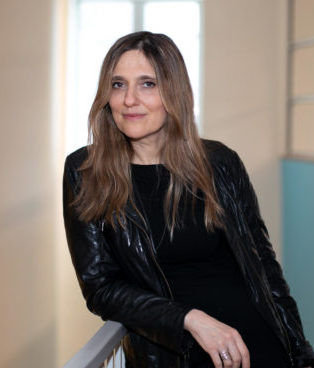
Prof. Regina Barzilay – MIT
Title:Solving the Right Problems: Making ML Models Relevant to Healthcare and the Life Sciences
Biography
Professor Regina Barzilay is a School of Engineering Distinguished Professor for AI and Health in the Department of Electrical Engineering and Computer Science and a member of the Computer Science and Artificial Intelligence Laboratory at the Massachusetts Institute of Technology. She is an AI faculty lead for Jameel Clinic, an MIT center for Machine Learning in Health. Her research interests are in machine learning models for molecular modeling with applications to drug discovery and clinical AI. She also works in natural language processing. She is a recipient of various awards including the NSF Career Award, the MIT Technology Review TR-35 Award, Microsoft Faculty Fellowship and several Best Paper Awards at NAACL and ACL. In 2017, she received a MacArthur fellowship, an ACL fellowship and an AAAI fellowship. In 2020, she was awarded the Squirrel AI Award for Artificial Intelligence for the Benefit of Humanity. She received her PhD in Computer Science from Columbia University, and spent a year as a postdoc at Cornell University. Prof. Barzilay received her undergraduate degree from Ben-Gurion University of the Negev, Israel.
Abstract
The first-generation models for drug discovery and clinical applications were mostly direct modifications of algorithms developed for NLP, computer vision, and other well-established application areas. However, the deployment of these models revealed the significant mismatch between their basic assumptions and the needs of these new life sciences applications. Examples include challenging generalization scenarios, unknown biases in the collected data, and the inability of domain experts to validate model predictions. In my talk, I will illustrate some of these problems, and introduce our initial solutions to them.

Prof. Gill Bejerano – Stanford University
Title: Diagnose all monogenic diseases and patients – Incentive is all you need
Biography
Gill Bejerano is a Professor at Stanford University. He holds a B.Sc. In Mathematics, Physics and Computer Science, and a Ph.D in Computer Science (Machine Learning applications in Biology) from Hebrew University of Jerusalem. Gill got into genomics in 2003, started a wet lab in 2007, began analyzing patient genomes and medical records in 2014, got into cryptogenomics in 2017 and has become very interested in healthcare economics and patient risk management in 2021. He is recognized by multiple academic awards including two best paper and tomorrow’s PI awards, Mallinckrodt, Sloan, Human Frontiers, Searle, Okawa, David and Lucile Packard, Microsoft and Sony Scholar awards. Gill has trained, collaborated and advised computational scientists, experimentalists, clinicians, and MBAs and has helped both start-ups and Fortune 500 companies.
Abstract
As much as 8% of the world’s population is estimated to suffer from a rare disease. Most rare diseases are monogenic diseases, caused by mutations to a single gene. Using tools from Machine Learning, Natural Language Processing and Genomics we now have working prototypes, able to diagnose ALL monogenic diseases and patients. I’ll present the computational building blocks of this system. Considering a whole genome now costs $100, it’s time to build these systems.
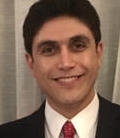
Prof. Alireza Haghighi – Harvard Medical School
Title:User-friendly Bioinformatics: Enabling More Efficient Genomic Analysis At Scale
Biography
Dr. Haghighi is the Director of International Center for Genetic Disease at Brigham and Woemen’s Hospital, Harvard Medical School. He is an American Board certified geneticist and clinician scientist, an Assistant Professor of Medicine at the Department of Medicine, Harvard Medical School. Dr. Haghighi has served as the Lead Clinical Molecular Geneticist at Harvard Brigham Genomic Medicine, an integrated clinical and research program that uses genomics and biological validation to (1) discover genetic causes of undiagnosed monogenic diseases, and (2) to devise improved or novel diagnostics or treatments. He completed his studies at University of Oxford, and Harvard Medical School, and was based at the Wellcome Trust Centre for Human Genetics before moving to Harvard. His research focuses on clinical and genetic investigation of inherited diseases and discovering novel disease genes, using a combination of genomic technologies such as whole genome sequencing, and RNAseq. He also works on translating the research discoveries into better diagnostics and improved management strategies, and opportunities for developing novel therapeutics to treat diseases. Dr. Haghighi is the President of Advancement Initiative for Medicine and Science (AIMS), a global foundation dedicated to the advancement of medicine and science around the world. AIMS brings together world-class academics and physicians (from the US and Europe), and work with governments and universities in partner countries in order to develop and implement different knowledge and expertise transfer programs with the aim of building capacity in medicine and surgery there. Dr. Haghighi has led many national and international projects for advancing medical science in different countries to improve the health and well-being of people. He provides consultation to governments, and academic and industrial organizations and institutes.
Abstract
Whole exome (WES) and whole genome sequencing (WGS) are powerful diagnostic and research tools for genetic disease, but without proper tools, this data can be inaccessible to researchers. Different informatic methods have been developed to discover disease-causing mutations in patients. I will discuss the advantages and shortcomings of these methods/tools and present on a genomic analysis platform that includes an intuitive browser-based system for analyzing exome and genome data from patients and families from raw sequencing data to finalized report and will serve as a resource not only for laboratory clinical geneticists but also patient-facing genetics providers. This portal will incorporate a secure, and intuitive web interface for analysis of genetic sequencing data, permitting the rapid prioritization of candidate variants based on allele frequency, inheritance patterns, and functional annotation, Mendelian inheritance mode specific variant callers developed by our team, and sophisticated and adaptable variant filtration and reporting tools. The clinical variant classification and clinical reporting modules can be incorporated into to other analysis platforms and easier and most efficient analysis.
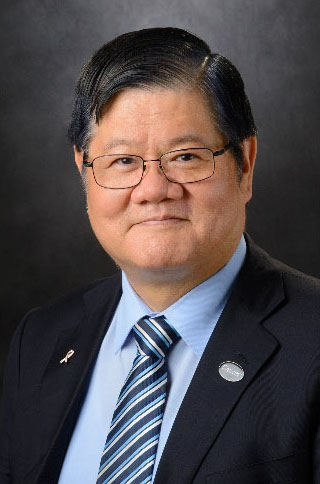
Prof. Mien-Chie Hung -China Medical University
Title: Marker-guided effective therapy (Mget)
Biography
Mien-Chie Hung, Ph.D. is the President for China Medical University in Taichung, Taiwan. He was vice president for basic research and professor and chair of the Department of Molecular and Cellular Oncology at The University of Texas MD Anderson Cancer Center. Dr. Hung is a basic scientist with a keen translational vision and especially his recent research effort has significantly contributed to understanding the biology of cancer and to developing combinational cancer therapies to overcome resistance. Up to date, Dr. Hung has published about 600 peer-reviewed articles, of which over 150 were published in journals with impact factor 10 or above. His lifetime h-index reaches to 154 (Google Scholar). He is one of members of Selection Committee for Tang Prize in Biopharmaceutical Science category and founding Editorial Members for Cancer Cell. He also serves as Editor-in-chief for American Journal for Cancer Research (2015-2017, 2019 till present) and Senior Editor for Cancer Research (American Association for Cancer Research, 2018-2021). Dr. Hung was inducted as an Academician of the Academia Sinica in Taiwan in 2002 and as a Fellow in Biological Sciences section, American Association for the Advancement of Science in 2010. His laboratory has a long term commitment to the following research areas: 1) Unravel non-canonical signal pathways of Epidermal Growth Factor Receptor (EGFR); 2) Identification of crosstalk signaling pathways in cancer cells to predict resistance for targeted therapy; 3) Elucidation of posttranslational modifications that play critical roles in tumor progression; 4) Discovery of signaling pathways and key regulators that are specific and critical to cancer stem cells proliferation; 5) Development of effectively immunotherapy and study of resistant mechanisms of immunotherapy; 6) screening natural products for anti-SARS-CoV-2.
Abstract
Anti-PD-1/PD-L1 therapy is a promising approach in cancer therapy. We showed that glycosylation of PD-L1 is required for its protein stability and interaction with PD-1 (Nature Communications 2016). We demonstrated TNFα as a major factor triggering cancer cell immunosuppression against T cell surveillance via stabilization of programmed cell death-ligand 1 (PD-L1) (Cancer Cell 2016). In collaboration with StCube Pharmaceuticals Inc., we have developed monoclonal antibodies against glycosylation-specific PD-L1. Impressive therapeutic effect was observed through antibody-drug-conjugate approach (Cancer Cell 2018a & Cancer Res 2020). Furthermore, we developed effective combination therapy by metformin-activated AMPK kinase to downregulates PD-L1 through alteration of glycosylation of PD-L1 and (Molecular Cell 2018). Our group has conducted a series of vigorous studies to identify additional potential targets to overcome PD-1/PD-L1 resistance and develop effective combination therapy including c-MET inhibitors (Gastroenterology 2019), IL-6/JAK1 pathway (J Clin Invest 2019), and Galectin-9 (Nature Comm 2021). These findings provide potential therapeutic strategies to enhance cancer immune therapy efficacy by targeting PD-L1 stabilization to combat multiple cancer types. We reported a novel PD-L1 function that is independent of its role in immune checkpoint in Nature Cell Biology 2020–PD-L1 in the nucleus harbors a nuclear transcriptional activity and promotes tumor pyroptosis downstream of TNFα. More recently, we further identified molecular mechanisms that caused resistance to anti-PD-1/PD-L1 therapy (J Clin Invest, 2021) and currently are developing new therapeutic approach to overcome the resistance. This talk will include our discoveries on developing therapies for lung or pancreatic cancers (Cancer Cell 2018b, 2018c); a new methodology to retrieve antigen by protein deglycosylaton improves predictive ability of PD-L1 as a biomarker for immunotherapy. (Cancer Cell 2019, AJCR 2022). I will also summarize multiple new advances of anti-PD-L1/ PD-1 that have recently been developed in the literature (Nature Reviews Clinical Oncology, 2022). In addition, we identified the inhibition of the protein kinase activity of PCK1 as a potential treatment strategy in HCC (Nature 2020) and currently developed high throughput screening strategy to identify potential inhibitors for treatment.
During the pandemic, the research team at China Medical University in Taichung has successfully used our experience and expertise in cancer targeted therapy to target SARS-CoV-2. We established functional assays on SARS-CoV2 infectivity including Mpro, Furin, TMPRSS2, Vpp (virus particles pseudotyped) and others, and screened multiple natural products libraries. Up to date, we published several reports describing compounds that inhibit SARS-CoV-2, that are briefly described below. For natural produces, tannic acid serves as a potent dual inhibitor of viral main protease Mpro and TMRPRSS2 on the host cells (AJCR 2020a); Peimine inhibits several variants of SARS-CoV-2 cell entry via blocking the interaction between viral spike (S) protein and Angiotensin-Converting Enzyme 2 (ACE2) on the host cells (in revision). Also, several FDA-approved drugs for repurposing have been identified to associate anti-SARS-C-V2 activity, such as Flupirtine, a selective neuronal potassium channel opener, was identified as a potential TMPRSS2 inhibitor (AJCR 2021); Disulfiram, a drug for alcoholism treatment, blocked cell entry of SARS-CoV-2 via inhibiting the interaction of Spike protein and ACE2 (AJCR, in press); Imatinib (also known as STI571, Gleevec), a tyrosine kinase inhibitor for cancer treatment, inhibits the expression of ACE2 and cell entry of the SARS-CoV-2-derived pseudotyped viral particles (Int J Mol Sci. 2021); Anti-malarial drug tafenoquine (TFQ) is identified to inhibit both Mpro and TMPRSS2 protease activity. Furthermore, one TFQ derivative, compound 7, showed a better therapeutic index than TFQ on TMPRSS2, and may therefore inhibit the infectibility of SARS-CoV-2, including that of several mutant variants (JBC 2022). From multiple co-crystallization structures between inhibitor compounds and Mpro of SARS-CoV-2, we have discovered an interesting nature of Mpro function (AJCR 2020b and unpublished data). In addition, a set of traditional herbal medicine and coffee leaf extract were shown to inhibit different strains of SARS-CoV-2 infectivity (AJCR 2020c and IJBS, in press). IRB for clinical trials has been approved and the clinical trials are just initiated to recruit patients.
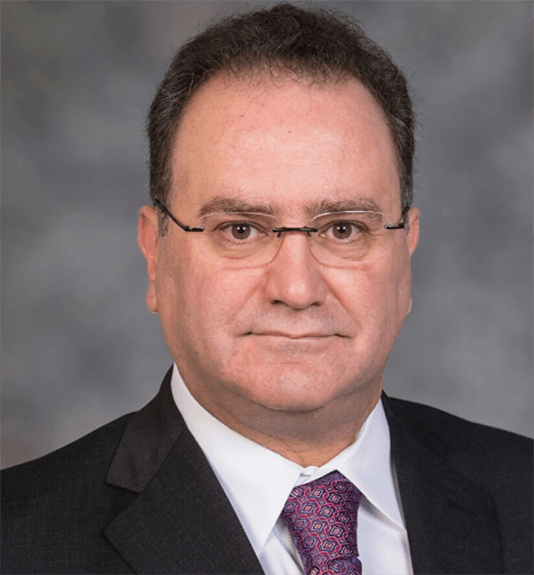
Prof. Antonios Mikos – Rice University
Title: 3D-Printable Hydrogel Bioinks for Tissue Engineering
Biography
Antonios G. Mikos is the Louis Calder Professor of Bioengineering and Chemical and Biomolecular Engineering at Rice University. He is the Director of the National Institutes of Health Center for Engineering Complex Tissues, the Director of the Center for Excellence in Tissue Engineering, and the Director of the J.W. Cox Laboratory for Biomedical Engineering at Rice University. He received his Dipl.Eng. (1983) from the Aristotle University of Thessaloniki, Greece, and his Ph.D. (1988) in chemical engineering from Purdue University. He was a postdoctoral researcher at the Massachusetts Institute of Technology and the Harvard Medical School before joining the Rice Faculty in 1992 as an assistant professor. Mikos’ research focuses on the synthesis, processing, and evaluation of new biomaterials for use as scaffolds for tissue engineering, as carriers for controlled drug delivery, as non-viral vectors for gene therapy, and as platforms for disease modeling. His work has led to the development of novel orthopaedic, dental, cardiovascular, neurologic, and ophthalmologic biomaterials. He is the author of over 640 publications and 32 patents. He is the editor of 15 books and the author of one textbook (Biomaterials: The Intersection of Biology and Materials Science, Pearson Prentice Hall, 2008). Mikos is among the top 1 percent most cited researchers in his field. He has been cited over 83,000 times and has an h-index of 150. Mikos is a Member of the National Academy of Engineering, a Member of the National Academy of Medicine, a Member of the International Academy of Medical and Biological Engineering, a Member of the Academia Europaea, a Member of the Academy of Medicine, Engineering and Science of Texas, and a Member of the Academy of Athens.
Abstract
The use of 3D printing has increased substantially as a research method to study the biology and regeneration of complex tissues within tissue engineering studies. After decades of work in these specific sub-fields of biomaterial 3D printing and bioprinting, standardized methods for how to evaluate the biological effects and printability of bioinks are still being investigated. Additionally, the adaptation of promising hydrogels into printable bioinks remains a challenge preventing those candidate systems from being studied for further questions about more biomimetic architectural complexity and 3D structure – questions that a reliably printable system can address. Recently, our lab has attempted to meet the needs of the bioprinting community by studying novel bioinks to answer new questions within osteochondral tissue engineering and documenting the methods, assays, and standards by which the inks were translated from a mere hydrogel into a robust bioink that encapsulates living cells. Specifically, we put forward a high-throughput method that evaluates hydrogel polymer systems as candidates for the base material of future bioinks with a given cell type based on viability, proliferation, and immunostaining in 3D culture, using less than 1 million cells and 1 mL per ink to observe and compare biological outcomes. Then, we studied biological additives within a gelatin-based ink that induced bone and cartilage extracellular matrix production in encapsulated stem cells, and we also compiled a diverse array of methods to study printability additives, resulting in several novel osteochondral bioinks for extrusion, inkjet, and digital light processing 3D bioprinting. Select bioinks were then leveraged to answer questions about architecture within an osteochondral explant model, and here, we observed that architecture did indeed make a difference in the cells’ extracellular matrix deposition and integration into the natural tissue. Altogether, this body of work demonstrates how important 3D factors are when considering tissue-engineered constructs for regenerative medicine, and it also chronicles a vast array of protocols and methods to serve as a reference for the broader scientific community interested in studying those interactions in a 3D environment.
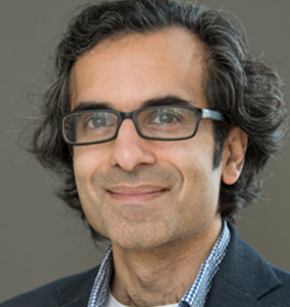
Prof. Soumya Raychaudhuri -Harvard Medical School
Title:Using single cell genomics to define the mechanisms of immune mediated diseases
Biography
Soumya Raychaudhuri serves as the Director for the Center for Data Sciences (BWH, HMS) and is appointed as an Associate Member at the Broad Institute. Additionally he is clinically active and sees patients at Brigham and Women’s Hospital Arthritis Center. After completing his MD/PhD at Stanford University, Raychaudhuri pursued clinical training in internal medicine, and then went on to pursue subspecialty training in rheumatology at Brigham and Women’s Hospital. He concurrently completed postdoctoral training in human genetics at the Broad Institute with Dr. Mark Daly. Since joining the faculty at Harvard Medical School in 2010, he has contributed to the understanding of the genetic basis of rheumatoid arthritis and other immune-mediated diseases. He has also been at the forefront of devising statistical and computational methods to localize genetic association signals to causal variants, and to interpret human genetic data in the context of functional information. He currently has active research programs in the human genetics and functional genomics of tuberculosis, type I diabetes, and rheumatoid arthritis, with a specific focus on using genomic strategies to understand CD4+ T cell biology.

